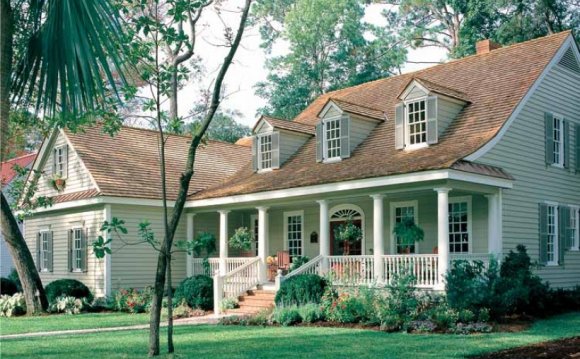
Robert Adam was a dominate force in English architecture. Roman influences, from the sources he observed himself in his travels to Italy and not based on Renaissance interpretations, highlight his work. He popularized a number of design elements (swags, garlanmds, urns, and various stylized geometric designs) that he had seem in Italy. He also observed a diversity of spacial planning in Roman ruins and incorporated those into his designs.
Adam was intensely influential to American architecture following the Revolutionary war in a period which is often called Federal (1780 to 1820). A new country required a new architecture, not only for its public buildings, but also for domestic residences. America also now had architects: Charles Bulfinch in Boston, Benjamin H. Latrobe in Philadelphia and Virginia, Gabriel Manigault in Charleston, South Carolina, William Jay in Savannah, Georgia, John McComb in New York, Samuel McIntire in Salem, Massachusetts, and Alexander Parris in Maine. Examples of Adam style architecture can be found in all the principal seaports along the Atlantic coast, although scattered examples can be found elsewhere.
Identifying features of an Adam style residence, include
- semi-circular or eliptical fanlight over the front door, with or without side lights; a fanlight often incorporated into a more elaborate door surround, which may include a decorate crown or small entry porch;
- a cornice usually emphasized by decorate moldings;
- three part Palladian-style windows;
- most commonly a simple box, two or more rooms deep with doors and windows arranged in strict symmetry; however the box may be modified by projecting wings or attached dependencies;
- high style houses may have curved or polygon projections to the side or to the rear.
Compared to the earlier Georgian houses, Adam houses tend to appear to have a lightness and delicacy. Details tend to be smaller, but larger structural elements, such as windows and ceilings tend to be larger or higher. The interiors of many Adam houses contain graceful decorative ornament, eith or wood or plaster, applied to mantels, walls and ceilings. Such decorations often are carried over to the exterior as well, around windows and doors.
Beacon Hill, Boston
Russell House, Charleston, South Carolina
The photo credits for this section are as follow:
Boston: Patricia M. Shillingburg
Charleston: The photographs are by Alex McLean, from Great American Houses and their Archtectural Styles, by Virginia and Lee McAlester, 1994
RELATED VIDEO












